 | ||
The North West Shelf Venture, situated in the north-west of Western Australia, is Australia's largest resource development project. It involves the extraction of petroleum (mostly natural gas and condensate) at offshore production platforms, onshore processing and export of liquefied natural gas, and production of natural gas for industrial, commercial and domestic use within the state.
Contents
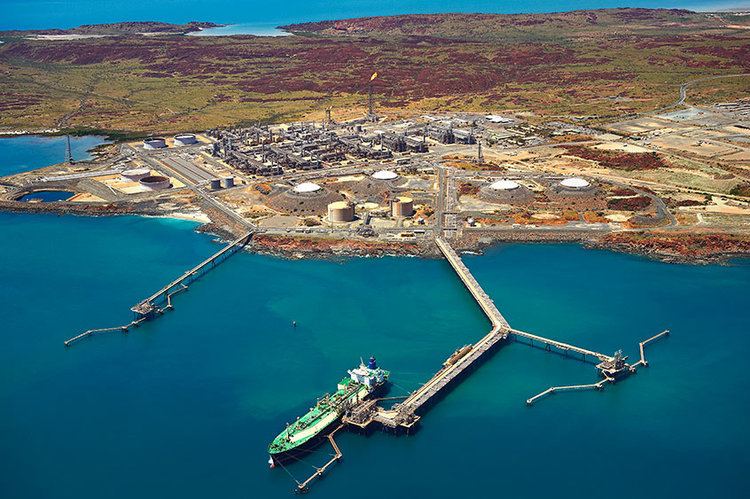
Project
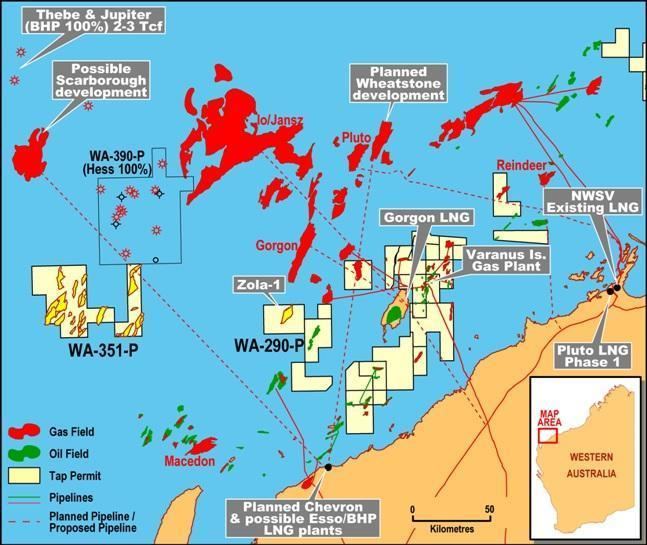
With investments totalling $25 billion since the early 1980s, the project is the largest resource development in Australian history. In the late 1980s, it was the largest engineering project in the world. The Venture is underpinned by huge hydrocarbon reserves within the Carnarvon Basin, with only about one-third of the Venture's estimated total reserves of 33 trillion cubic feet (930 km3) of gas produced to date.
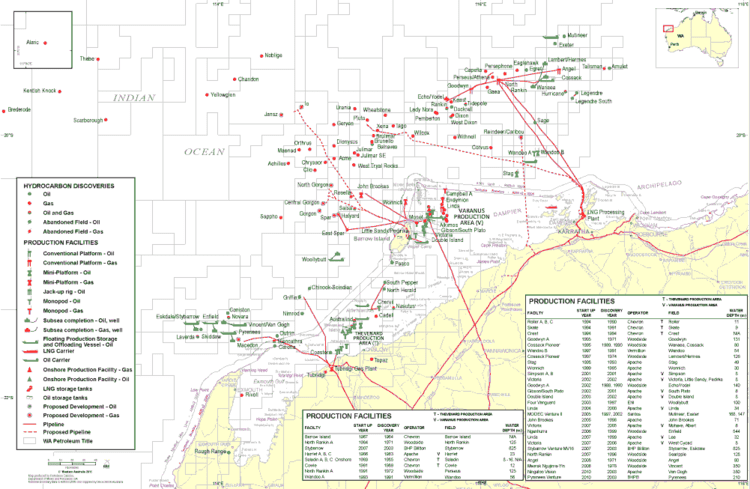
Owned by an international consortium, the venture is composed of six partners each holding a one-sixth share in the project. These are: Perth-based Woodside Petroleum; BHP Billiton; BP plc; Chevron Corporation; Royal Dutch Shell plc (which also own 24% of Woodside through Shell Australia); a venture between Mitsubishi Corporation and Mitsui & Co. called Japan Australia LNG (MIMI) Pty Ltd. North West Shelf Gas Pty Ltd. has a stake in the domestic gas phase of the project. Along with being a joint venture partner, Woodside is also the project operator on behalf of the other participants.
Assets
The venture currently has three currently active offshore facilities. A fourth, North Rankin B is under construction:
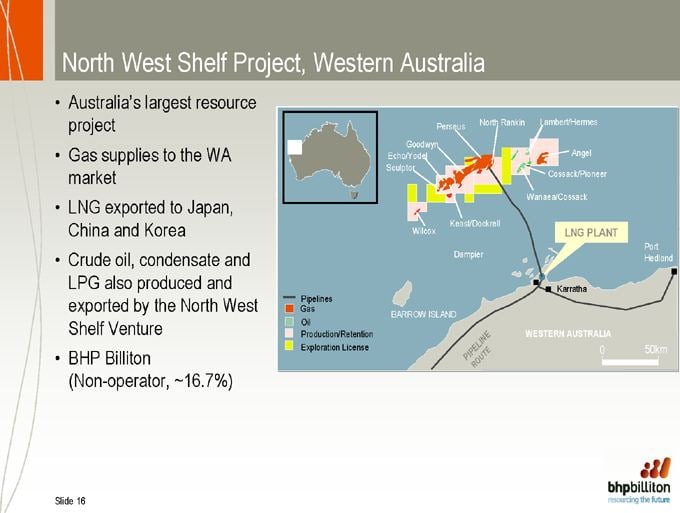
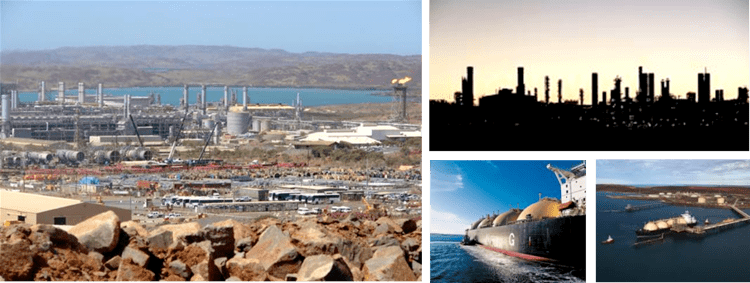
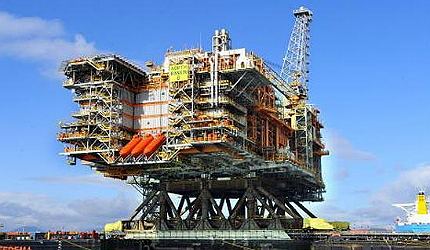

The condensate is transported to the Burrup Peninsula (Murujuga) onshore facility on the mainland 130 km away by two 42-inch (1.1 m) and 40-inch (1.0 m) undersea pipes.
Other assets include:
In March 2008, the partners approved a A$5 billion North Rankin 2 project which will underpin supply commitments to customers in Asia beyond 2013. The project will recover remaining low pressure gas from the ageing North Rankin and Perseus gas fields using compression. It will include the installation of a new platform (North Rankin B) which will stand in about 125 metres of water and will be connected by a 100-metre bridge to the existing North Rankin A platform.
Production and sales
The first LNG shipments went to Japan in 1989. 200 shipments per year (about one shipment every 1.5 days) in the purpose built LNG carriers totalling more than seven million tons are made around the world. Markets include sales to long term customers in Japan and spot buyers in China, Spain, South Korea and the United States.
To date, the venture has produced more than 1000 cargoes of light crude oil (natural gas condensate). Condensate is sold on the international energy market.
The venture is Western Australia's largest single producer of domestic gas providing about 65% of total State production. Pipeline gas is processed at the consortium's Karratha facility, and transported to customers in southern Western Australia via the 1530 km Dampier to Bunbury Natural Gas Pipeline. A subsidiary company, North West Shelf Gas Pty Ltd markets the domestic gas component to customers in Western Australia through private contracts and sales to AlintaGas.
